Rank Species | Genus Cassia Higher classification Cassia | |
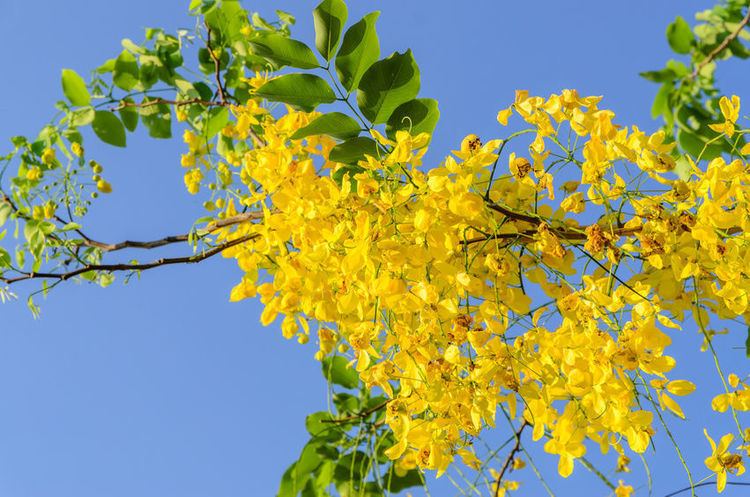 | ||
Similar Cassia, Cassia javanica, Royal poinciana, Sacred Tree, Phanera variegata | ||
Cassia fistula fabaceae golden shower tree c ssia imperial
Cassia fistula, known as the golden rain tree, canafistula and by other names, is a flowering plant in the family Fabaceae. The species is native to the Indian subcontinent and adjacent regions of Southeast Asia. It ranges from southern Pakistan eastward throughout India to Myanmar and Thailand and south to Sri Lanka. In ancient Tamil literature, it is called கொன்றை (kondrai) and is closely associated with the Mullai (forest) region of Sangam landscape. It is the national tree of Thailand, and its flower is Thailand's national flower. It is also the state flower of Kerala in India and of immense importance amongst the Malayali population. It is a popular ornamental plant and is also used in herbal medicine.
Contents
- Cassia fistula fabaceae golden shower tree c ssia imperial
- Amaltas cassia fistula indian golden shower tree
- Description
- Cultivation
- Pollinators and seed dispersal
- Medical use
- Culture
- Vernacular names
- References
Amaltas cassia fistula indian golden shower tree
Description
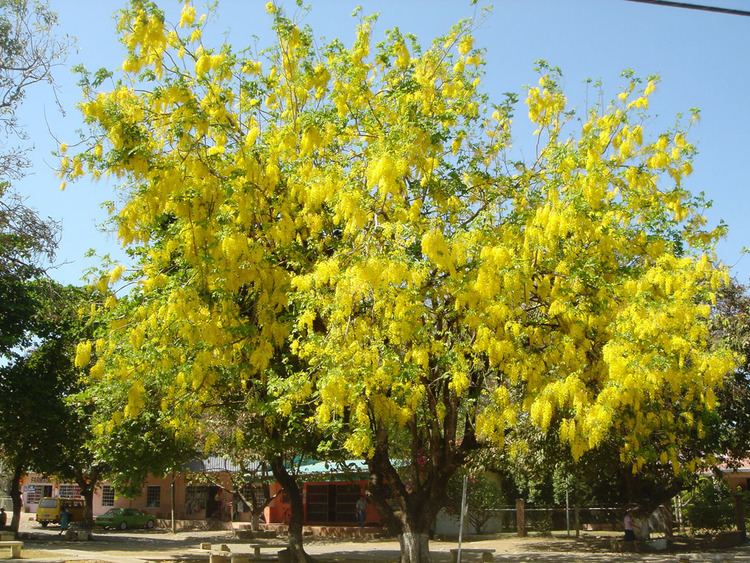
The golden shower tree is a medium-sized tree, growing to 10–20 m (33–66 ft) tall with fast growth. The leaves are deciduous, 15–60 cm (5.9–23.6 in) long, and pinnate with three to eight pairs of leaflets, each leaflet 7–21 cm (2.8–8.3 in) long and 4–9 cm (1.6–3.5 in) broad. The flowers are produced in pendulous racemes 20–40 cm (7.9–15.7 in) long, each flower 4–7 cm (1.6–2.8 in) diameter with five yellow petals of equal size and shape. The fruit is a legume, 30–60 cm (12–24 in) long and 1.5–2.5 centimetres (0.59–0.98 in) broad, with a pungent odor and containing several seeds. The tree has strong and very durable wood, and has been used to construct "Ahala Kanuwa", a place at Adams Peak, Sri Lanka, which is made of Cassia fistula (ahala, ehela, or aehaela, ඇහැල in Sinhala ) heartwood.
Cultivation
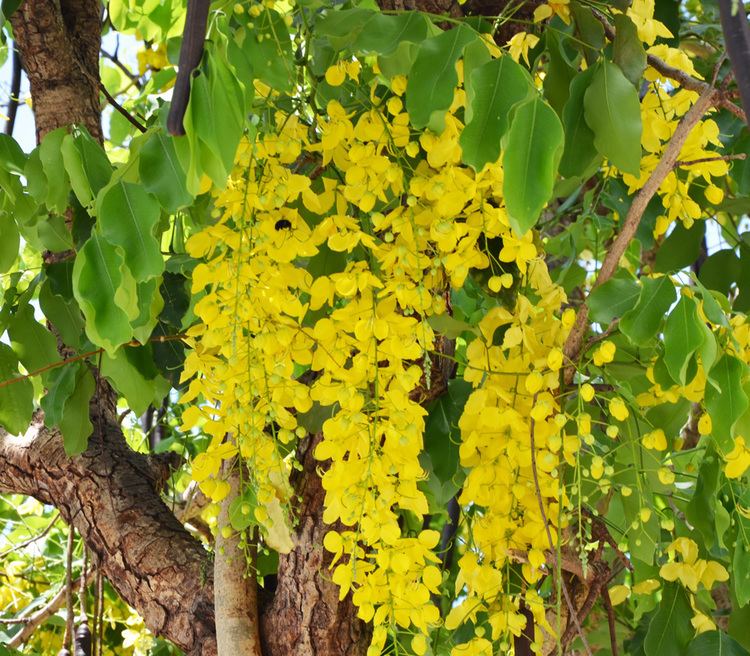
Cassia fistula is widely grown as an ornamental plant in tropical and subtropical areas. It blooms in late spring. Flowering is profuse, with trees being covered with yellow flowers, many times with almost no leaf being seen. It will grow well in dry climates. Growth for this tree is best in full sun on well-drained soil; it is relatively drought-tolerant and slightly salt-tolerant. It will tolerate light brief frost, but can get damaged if the cold persists. It can be subject to mildew or leaf spot, especially during the second half of the growing season. The tree will bloom better where there is pronounced difference between summer and winter temperatures.
Pollinators and seed dispersal
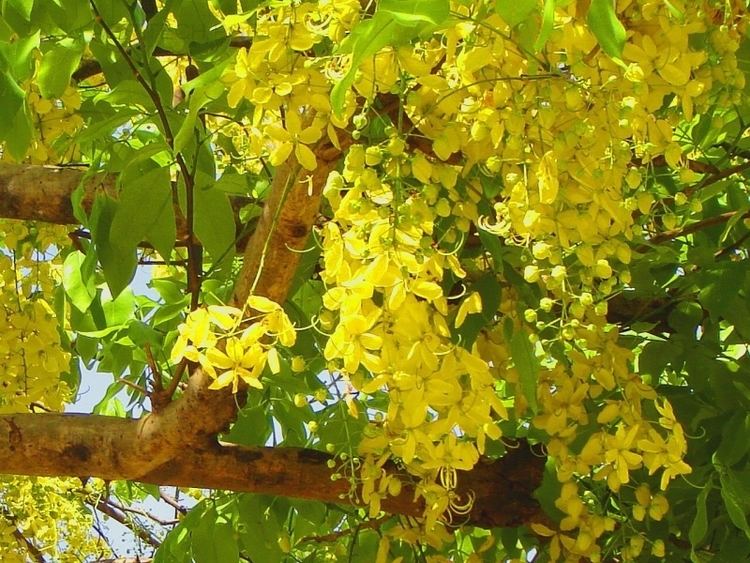
Various species of bees and butterflies are known to be pollinators of Cassia fistula flowers, especially carpenter bees (Xylocopa sp.). In 1911, Robert Scott Troup conducted an experiment to determine how the seeds of C. fistula are dispersed. He found that golden jackals feed on the fruits and help in seed dispersal.
Medical use
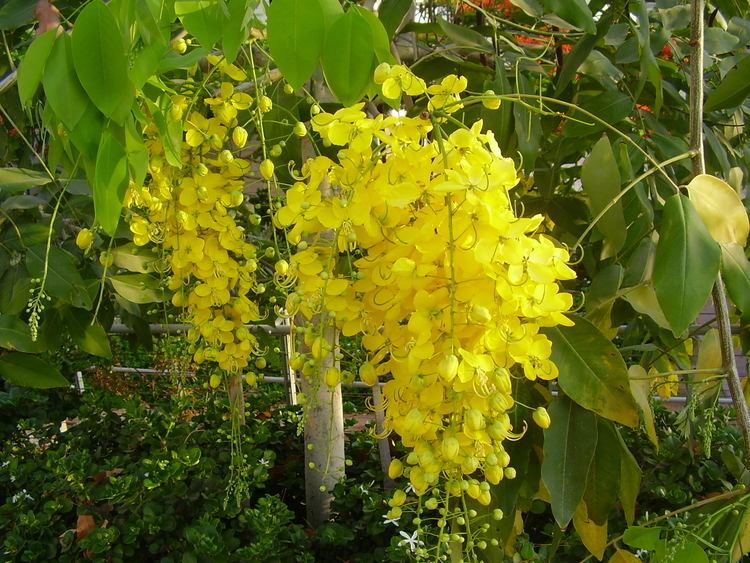
In Ayurvedic medicine, the golden shower tree is known as aragvadha, meaning "disease killer". The fruit pulp is considered a purgative, and self-medication or any use without medical supervision is strongly advised against in Ayurvedic texts. Though it has been used in herbalism for millennia, little research has been conducted in modern times.
Culture
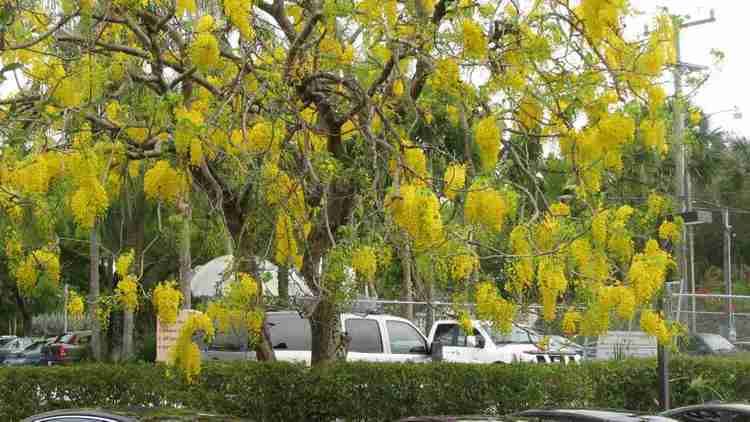
The golden shower tree is the state flower of Kerala in India. The flowers are of ritual importance in the Vishu festival of Kerala, and the tree was depicted on a 20-rupees stamp. The golden rain tree is the national flower of Thailand; its yellow flowers symbolize Thai royalty. A 2006–2007 flower festival, the Royal Flora Ratchaphruek, was named after the tree, which is known in Thai as Ratchaphruek (Thai: ราชพฤกษ์) and the blossoms commonly referred to as dok koon (Thai: ดอกคูน). C. fistula is also featured on a 2003 joint Canadian-Thai design for a 48-cent stamp, part of a series featuring national emblems. Cassia acutifolia, the pudding-pipe tree, furnishes the cassia pods of commerce.
In Laos, the blooming flowers of cassia fistula known locally as dok khoun are associated with the Lao New Year. People use the flowers as offerings at the temple and also hang them in their homes for the New Year in belief that the flowers will bring happiness and good luck to the households.
Vernacular names
Being so conspicuous and widely planted, this tree has a number of common names. In English, it is known as the golden shower, purging cassia, Indian laburnum or golden shower cassia. It is known in Spanish-speaking countries as caña fistula.
Names from its native range and surrounding regions include:
